Earlier today the Census Bureau posted the Advance Report on the latest Durable Goods New Orders. This series dates from 1992 and is not adjusted for either population growth or inflation.
Let's now review Durable Goods data with two adjustments. In the charts below the gray line shows the goods orders divided by the Census Bureau's monthly population data, giving us durable goods orders per capita. The blue line goes a step further and adjusts for inflation based on the Producer Price Index for All Commodities, chained in today's dollar value. This gives us the "real" durable goods orders per capita and thus a more accurate historical context in which to evaluate the conventional reports on the nominal monthly data.
We've included a callout in the upper right corner to document the decline from the latest month from the all-time peak for the series.
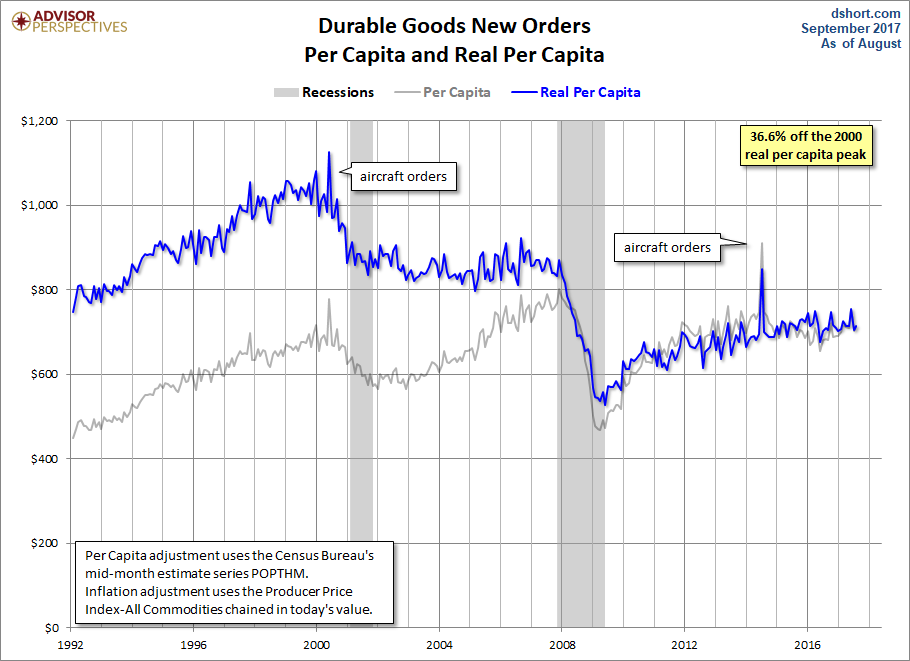
Economists frequently study this indicator excluding Transportation or Defense or both. Just how big are these two subcomponents? Here is a stacked area chart to illustrate the relative sizes over time based on the nominal data. We've also included a dotted line to show the relative size of the Core Capex subset, which we'll illustrate in more detail below.

The next chart is similar to the first one except that it excludes the volatile Transportation component, the series usually referred to as "core" durable goods.
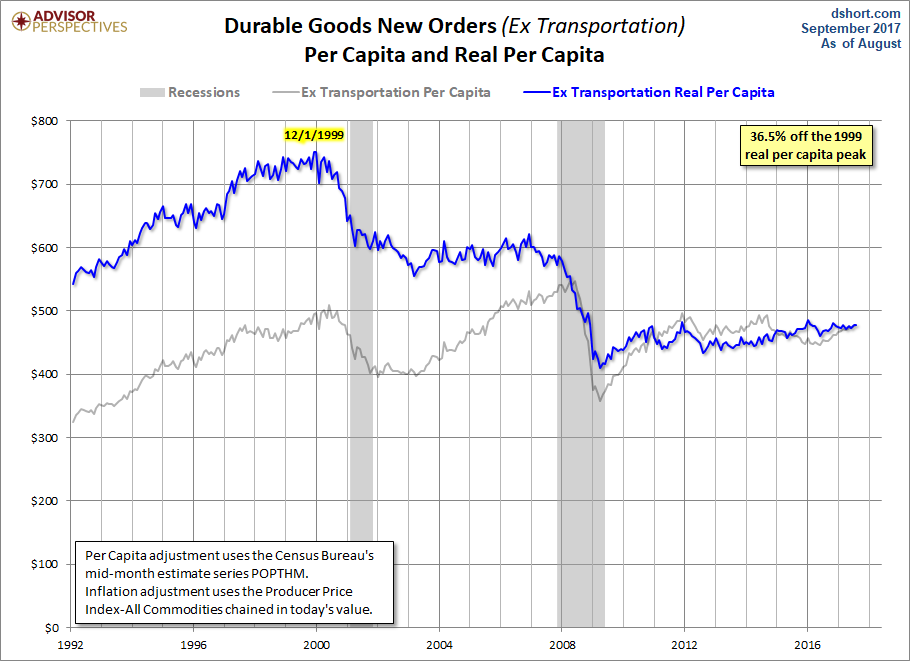
Now we'll exclude both Transportation and Defense for a better look at a more concentrated "core" durable goods orders.
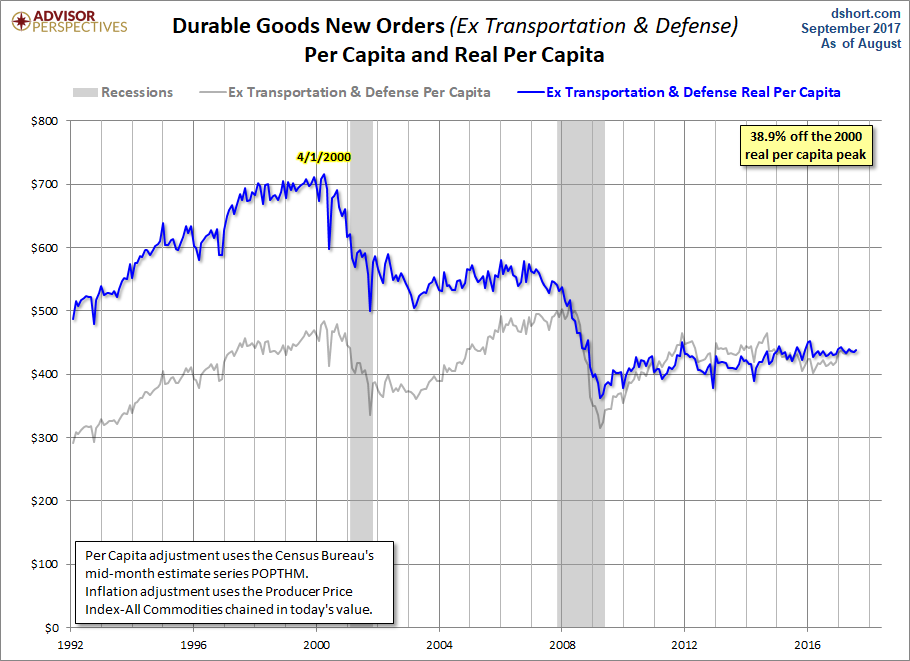
Here is the chart that gives the most accurate view of what Consumer Durable Goods Orders is telling us about the long-term economic trend. The six-month moving average of the real (inflation-adjusted) core series (ex-transportation and defense) per capita helps us filter out the noise of volatility to see the big picture.
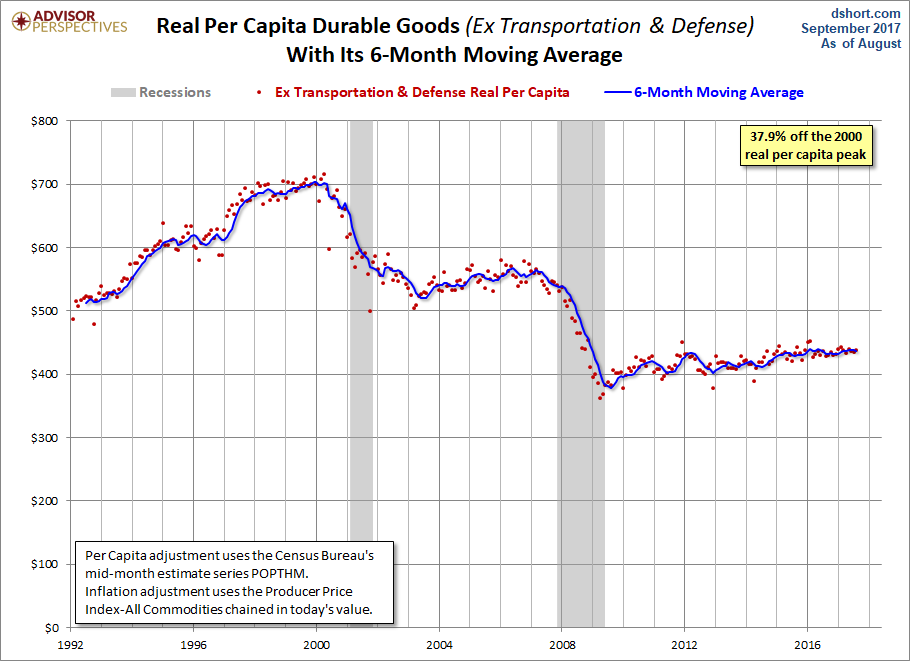
Capital Goods
Finally, let's take a big step back in the sales chain and look at the popular series often referred to as Core Capex — Nondefense Capital Goods New Orders Excluding Aircraft (capital goods are durable goods used in the production of goods or services), shown here on a per-capita basis, nominal and real.
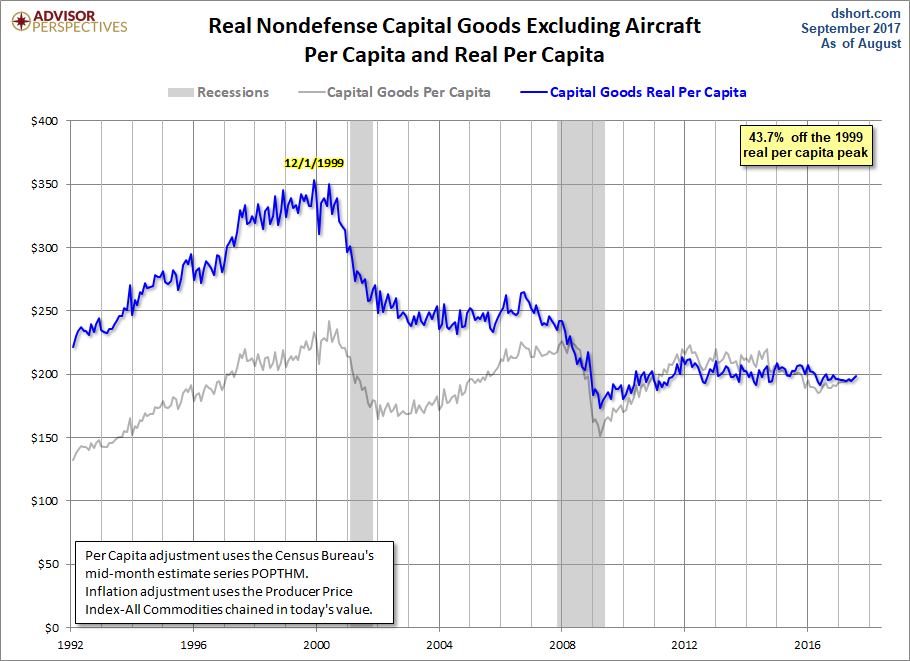
Here is the real per-capita Core Capex smoothed with its six-month moving average for a better sense of the trend. This metric has essentially gone nowhere over the past five years.

The Long-Term Trend
As these charts illustrate, when we study durable goods orders in the larger context of population growth and also adjust for inflation, the data becomes a coincident macro-indicator of a major shift in demand within the U.S. economy. It correlates with a decline in real household incomes, as illustrated in our analysis of the most recent Census Bureau household income data:
The secular trend in durable goods orders also helps us understand the long-term trend in GDP illustrated elsewhere.
As we can see from the various metrics above, revisions notwithstanding, the real per-capita demand for durable goods had increased since the trough at the end of the last recession. But new orders remain far below their respective peaks near the turn of the century. A key driver, or lack thereof, for healthy growth in durable goods orders is growth in household incomes. For a perspective on this point, see our latest update on Median Household Incomes, data through the previous month.
